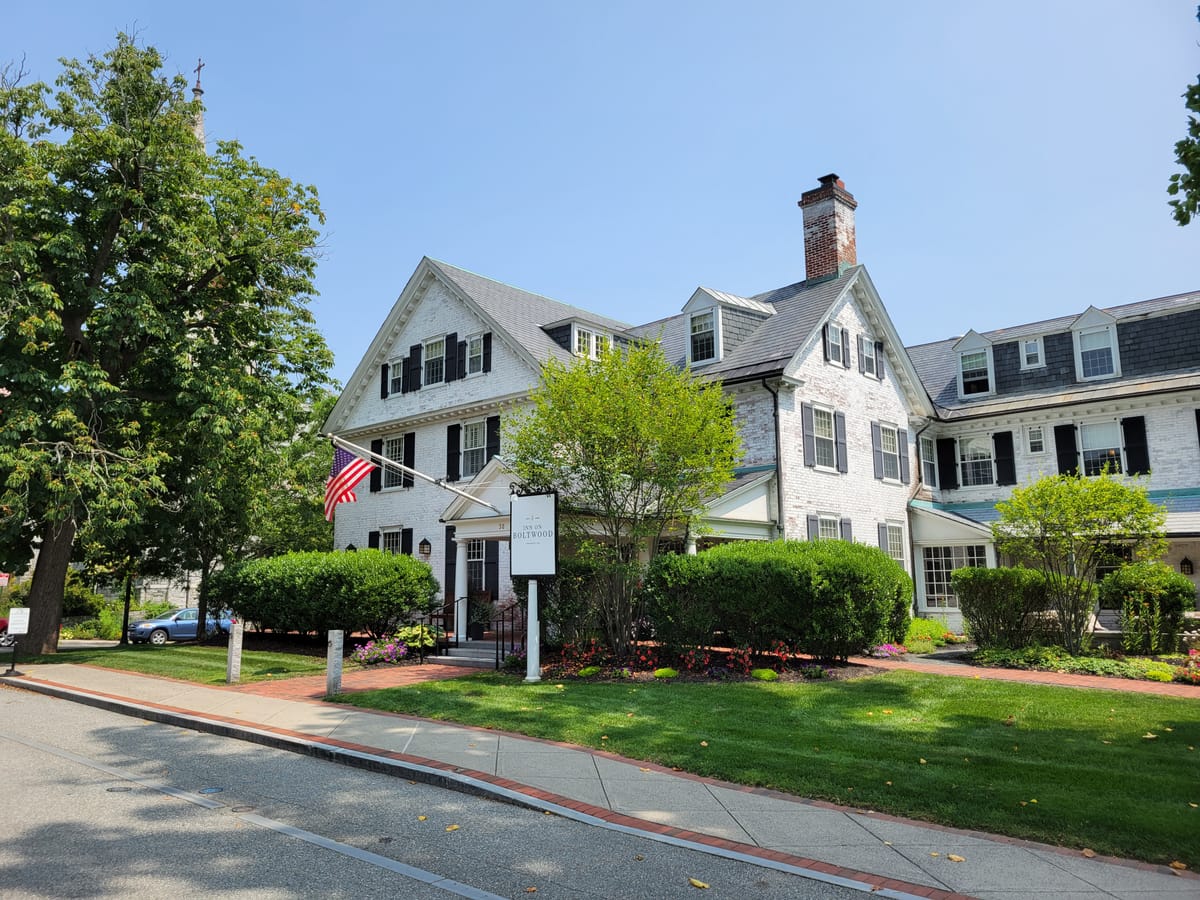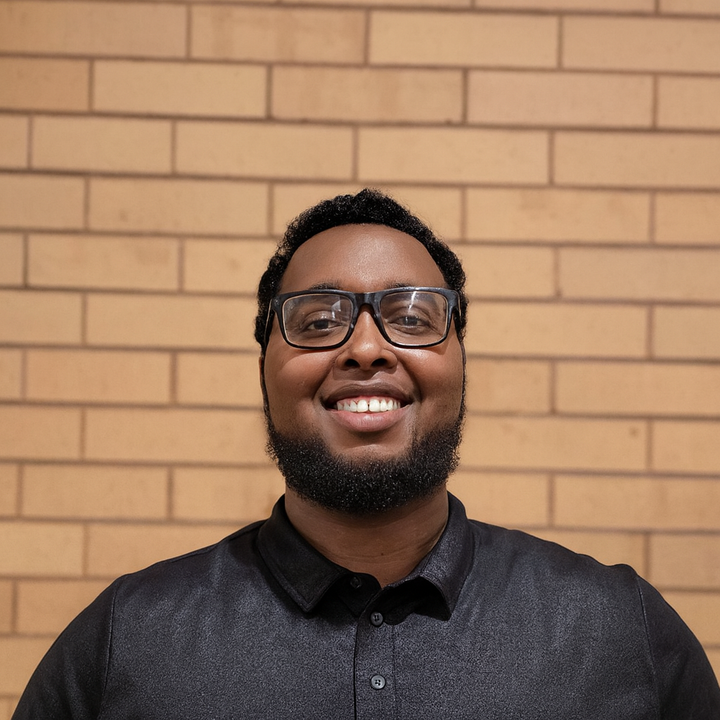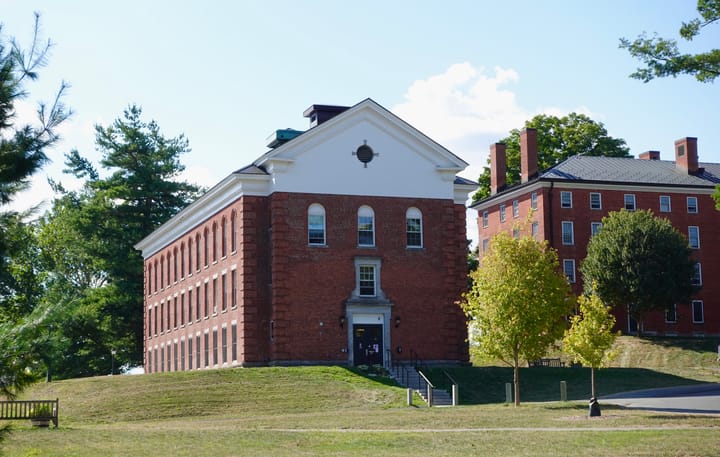College Hosts Event to Discuss Student-Athlete Divide
On Sunday, students gathered for a discussion on the causes of the divide between student-athletes and non-athletes and ideas on how to bridge the gap.

On Sunday, the college hosted a lunch at the Inn on Boltwood focused on "Bridging the Divide" between student-athletes and non-athletes. Approximately 100 attendees, including panelists, faculty members, athletes, and non-athletes gathered to discuss actions that can be taken to bring social unity to campus.
The event was organized by Student Affairs, the Office of the Provost and Dean of the Faculty, the Office of Diversity, Equity, & Inclusion, and Athletics. It's the latest attempt to bridge the gap on campus, after the college created a committee dedicated to the topic last spring.
The organizers of the event sent out a survey prior to the lunch, to which over 200 students responded (32% of respondents were varsity athletes and 68% were not). Over 85% of those who completed the survey said that a divide does exist between athletes and non-athletes, with 56% claiming that the divide affects their college experience. Approximately 55% agreed that it influences their relationships and 62% claimed that it altered the way they interact in the classroom.
Panelists included Assistant Director of the Center for Restorative Practices Fabio Ayala and students Jeb Allen ’27, Shane Dillon ’26, Mackenzie Dunson ’25, CJ Mitchell ’25, and AnLing Vera ’25, who began the conversation by sharing how their experience with the divide led them to this discussion.
Many panelists and interviewees identified the first-year dorming assignments, which did not seem to be randomized, as a contributor to the divide. “I’m on track, and my roommate in my dorm is also on track and cross country,” Christoph Osselmann-Chai ’28 said. “I thought that [since] I am an athlete, [I’d] probably get paired with another athlete just because [our] schedules might match better, but I never thought it’d be someone on the same team.”
Non-athlete Lautaro Ferreira ’28 elaborated on his experience forming a friendship with a student-athlete while participating in the Summer Bridge program. “I was close with my roommate, an athlete, [but] despite the fact that we still say hi to each other, it’s been almost impossible to keep a friendship with him.”
Many of the athletes interviewed agreed that their schedule does not leave much room for hanging out with friends so they mostly socialize with teammates. Aidan Gemme ’26, a member of the cross-country and track and field teams, attested to this: “I’m in the improv group … and because of my sport, I cannot hang out outside of the time we practice. I just don’t have the time to do that.”
Riley Priddy ’27, a member of the men’s soccer team, discussed the dual pressure of trying to form a close bond with teammates in the fall while also wanting to meet new people throughout orientation. “You have to assimilate straight away [and] be focused on bonding and working together because you need to be successful,” he said.
During roundtable discussions, the common sentiment was that orientation week and the month that follows are essential in determining what a student’s social life will look like at Amherst College. Football player Benjamin Henry ’27 made the argument that by the time a fall athlete’s schedule becomes more open in the spring semester, it is often too late to branch out when cliques have already formed.
Tom Ye ’25, a former member of the track and field team, said he decided to leave the team his senior year partly because of the consequences of the divide. “I feel like there are a lot of people out there who I’d be very good friends with … I just was not able to find the time,” Ye said.
Some athletes mentioned that it is reasonable that they will become closest to those they spend the most time with, and this typically consists of other athletes. Often, the relationships that come with being an athlete are built from the beginning of freshman year, and sometimes even earlier. Osselmann-Chai said, “When I was getting recruited … the head coach of my team made a group chat with me and every other freshman that had committed.”
Attendees mentioned that similar divides have been noted with international students, Summer Bridge participants, and transfer students. There is also a significant separation between STEM and humanities students. “Other divides certainly exist,” Ye stated. “I feel like the college can think about addressing not just the student-athlete divide, but everything else as well.”
Many at the event also mentioned the prominence of the divide when it came to the social scene at Amherst. Hayliann Smith ’28 stated that, as a non-athlete, “the party scene [feels] unwelcoming.” Osselmann-Chai discussed his experience as a DJ and how this has let him meet numerous new faces, however, he said that “most of the time … it’s just other athletes at the [events].”
This divide also manifests within the classroom. Speakers shared that upperclassmen encourage their underclassmen teammates to take courses that they deem easy, leading to athletes often congregating in the same classes. However, Henry shared that when he took a course where athletes were the minority, it forced him to form new connections that remain strong years later.
“You [get to] interact with different people … but when you continue to take classes based off of what your teammates recommend you lose these interactions,” Henry said.
Lastly, attendees at the event mentioned that the divide is perhaps most notably felt in Valentine Dining Hall. Students claimed that it has been long understood that certain tables in the furthest back room of Val belong to athletic teams. Smith said that the setup “makes it more difficult to approach people who are athletes because they tend to be together most of the time.”
Ultimately, the talk reached the consensus that this divide was the responsibility of both student-athletes and non-athletes. However, Henry felt that the power to resolve it was slightly more in the hands of the athletes. “Obviously, it is on everybody to try to interact with new people … but to a certain degree, I think there is a touch more responsibility on us as athletes to interact with non-athletes given we have that built-in community from the [start],” he said.





Comments ()